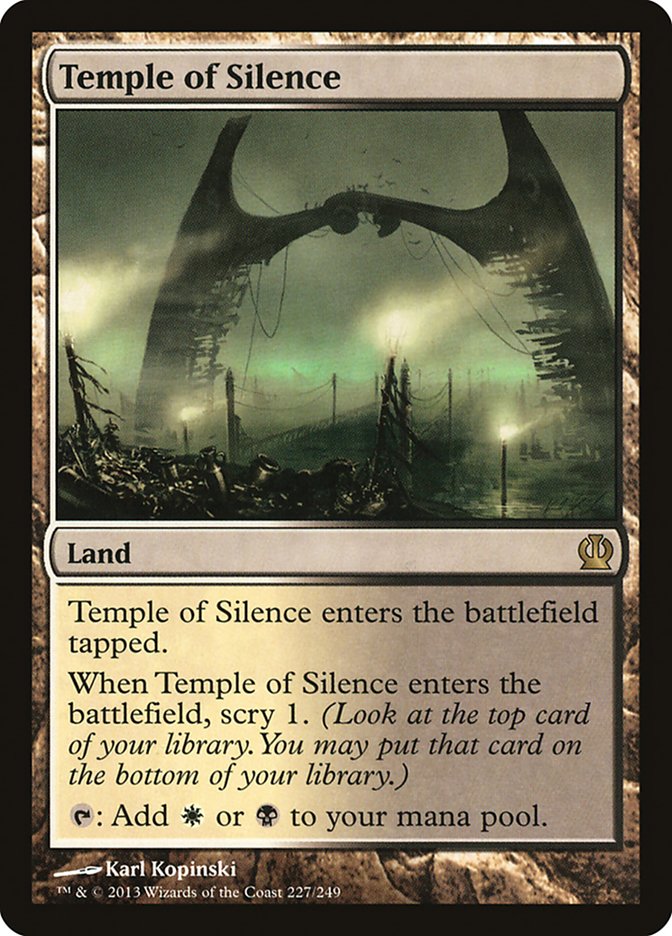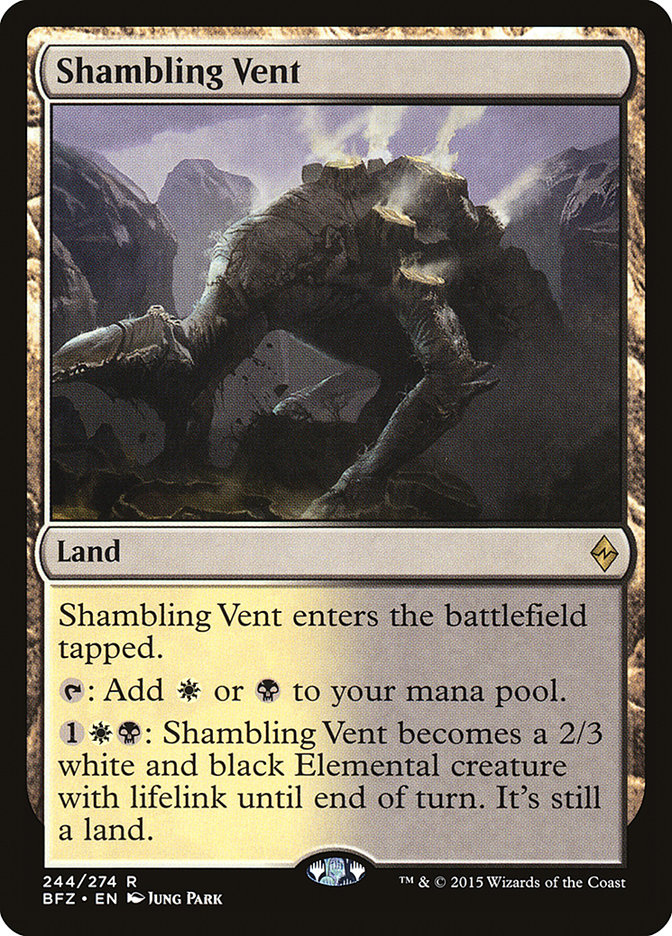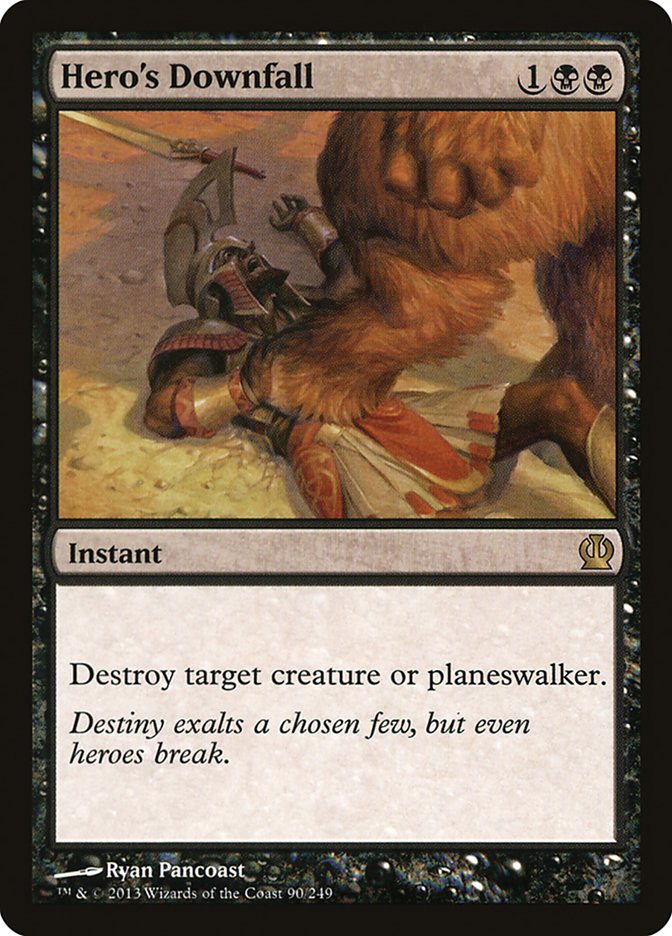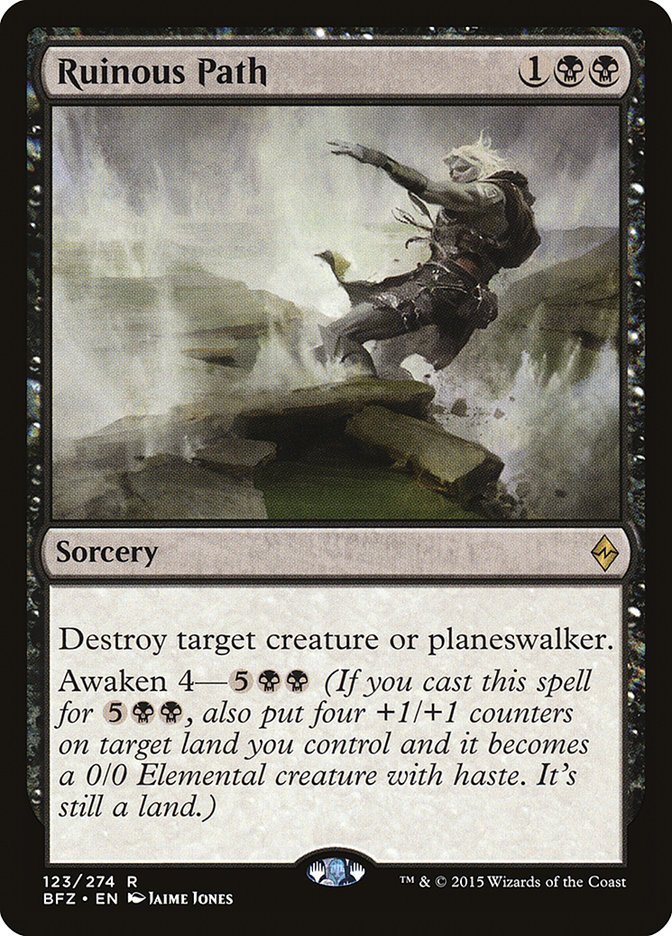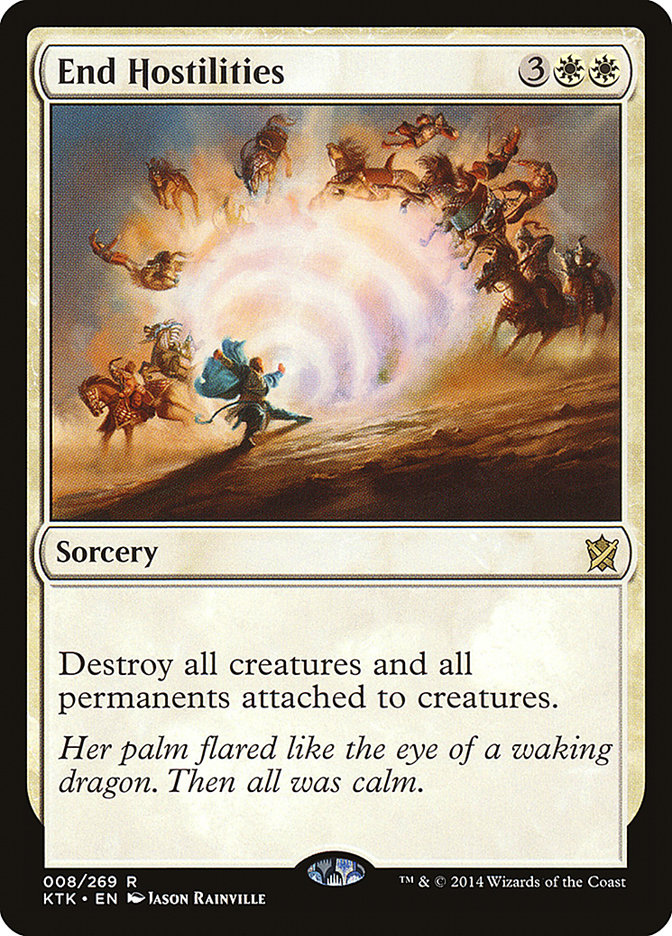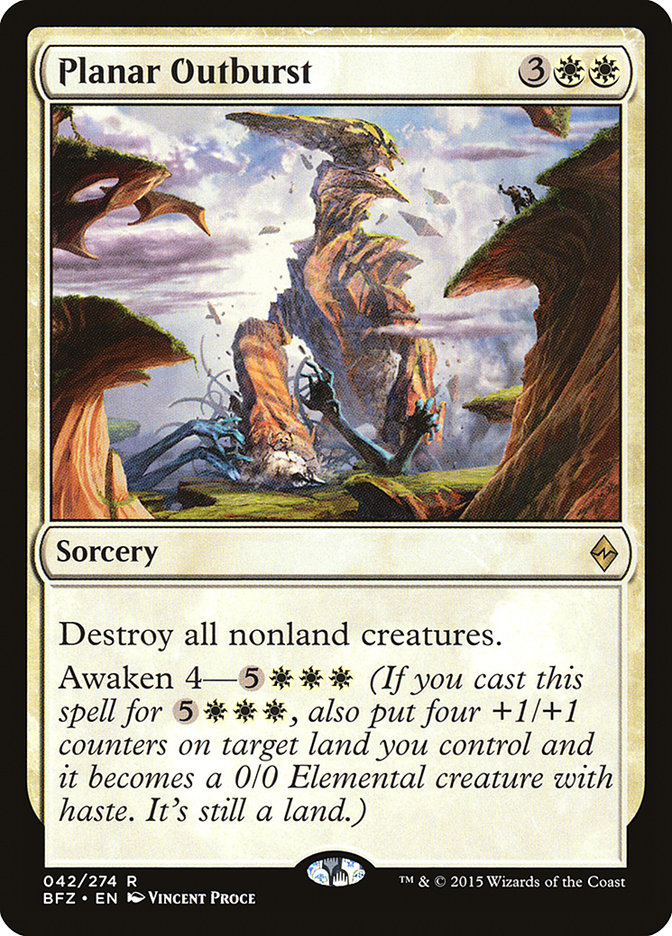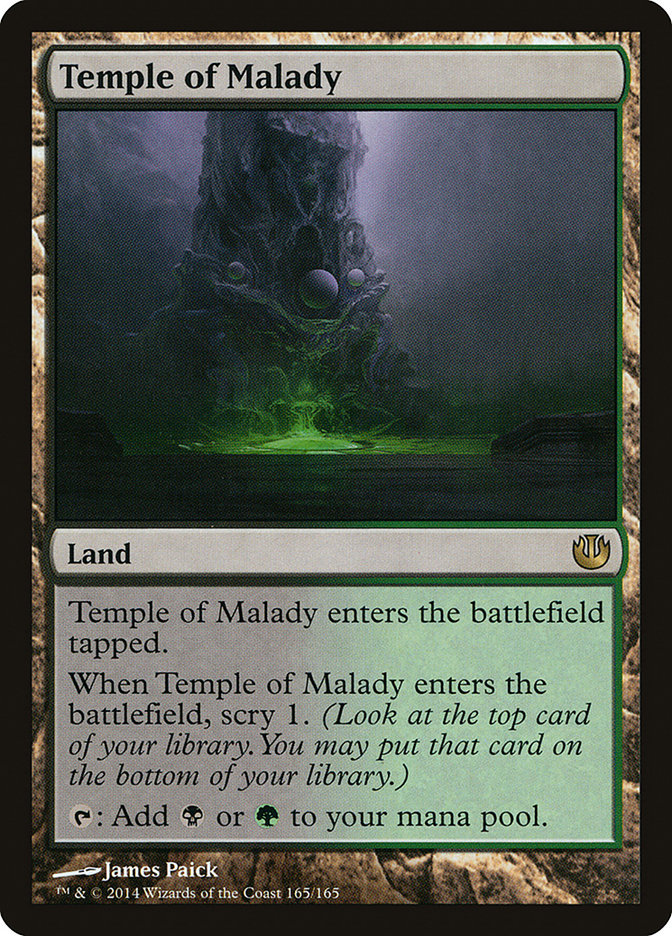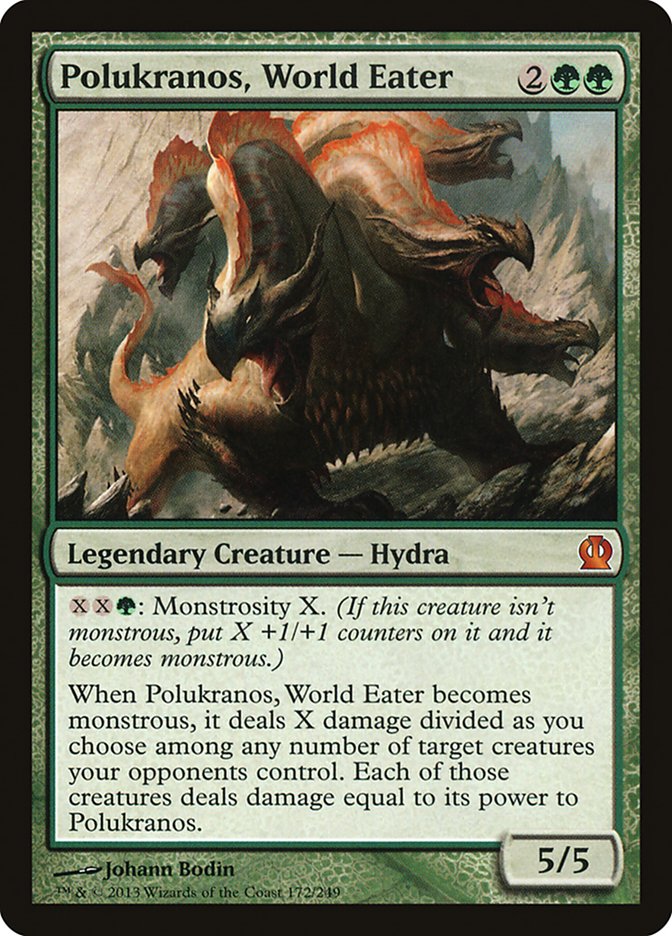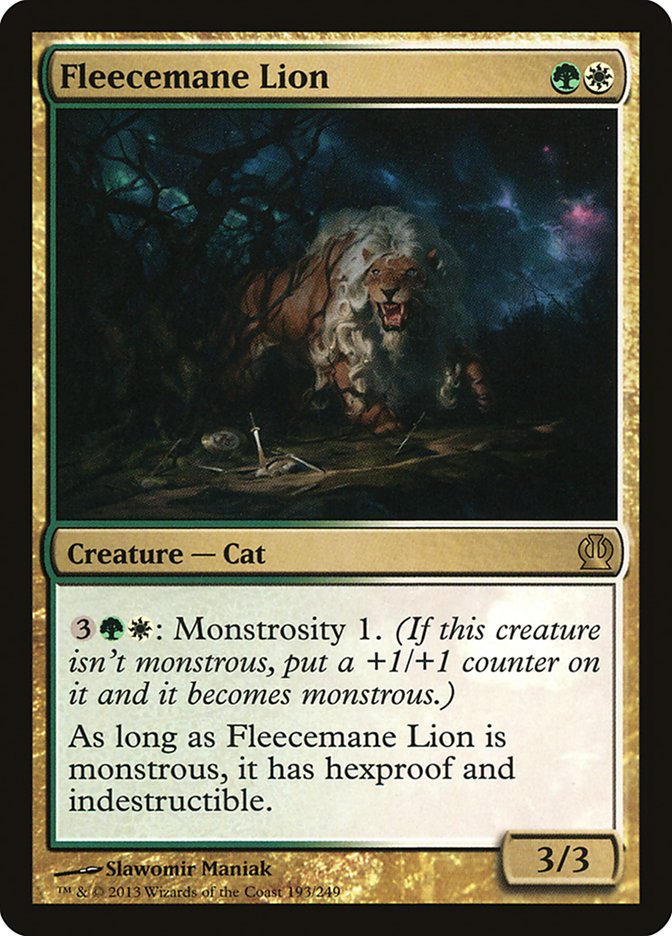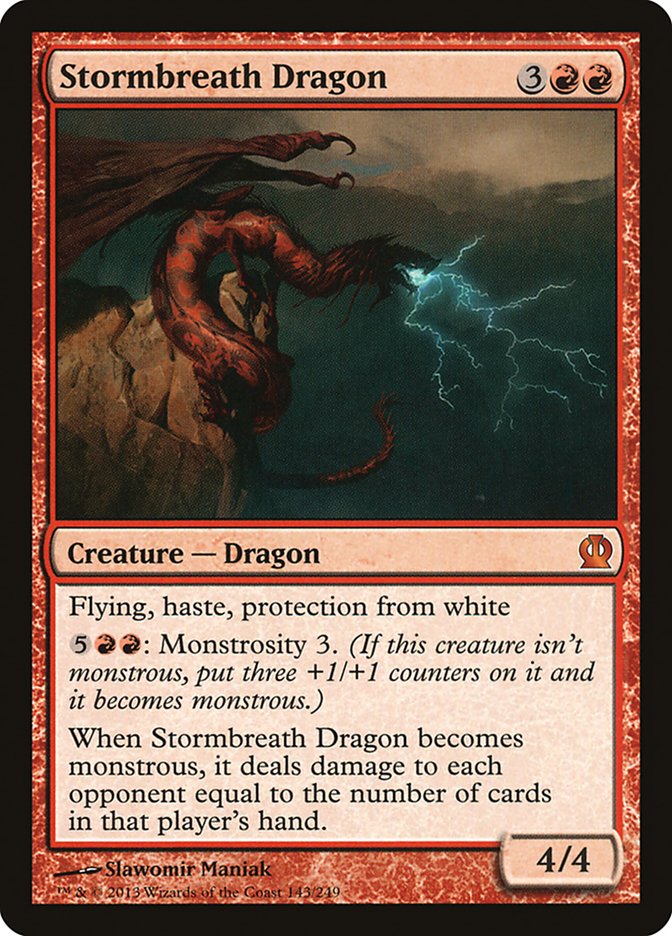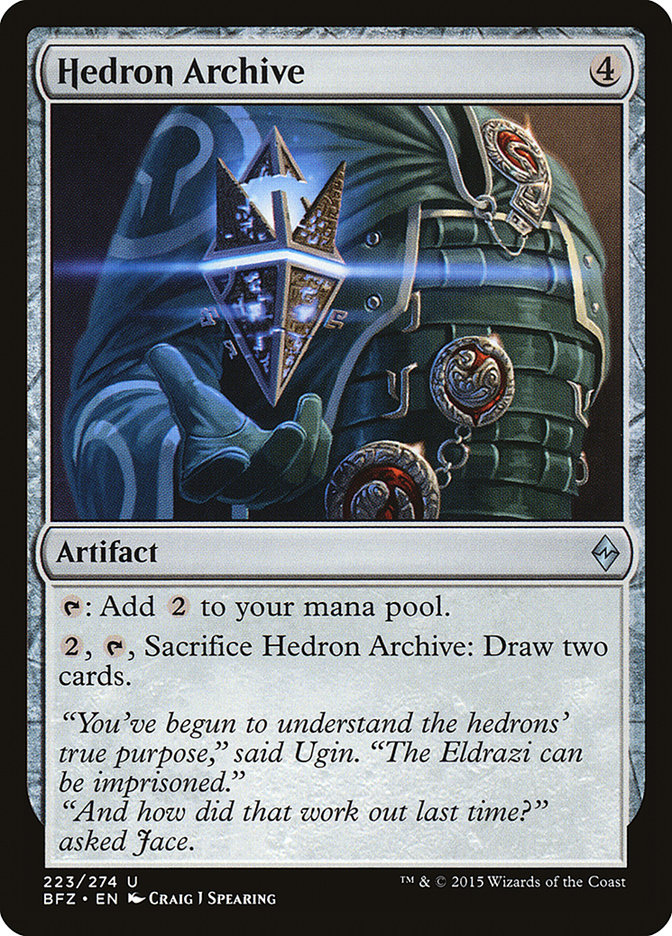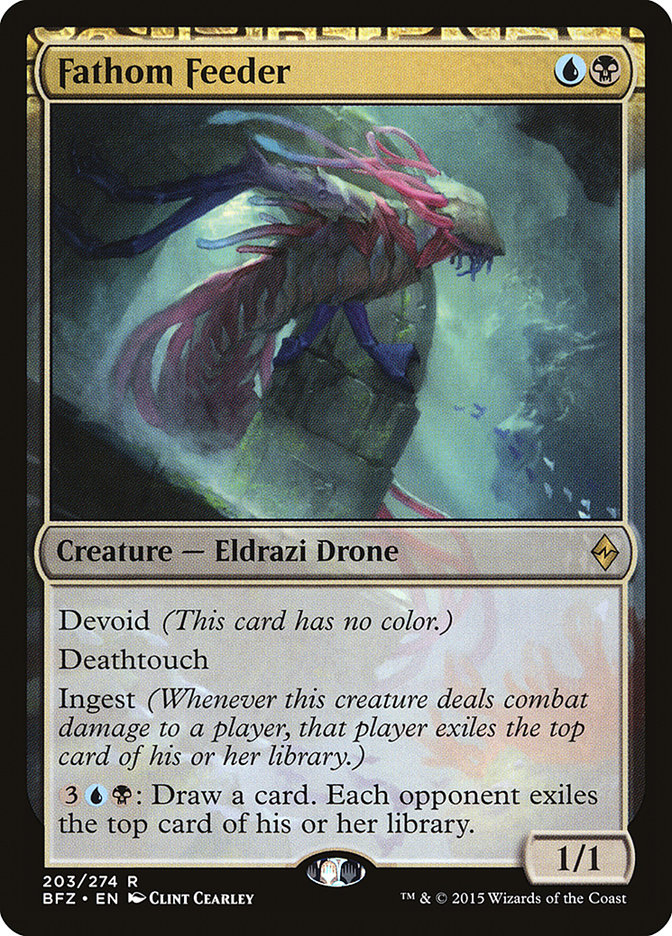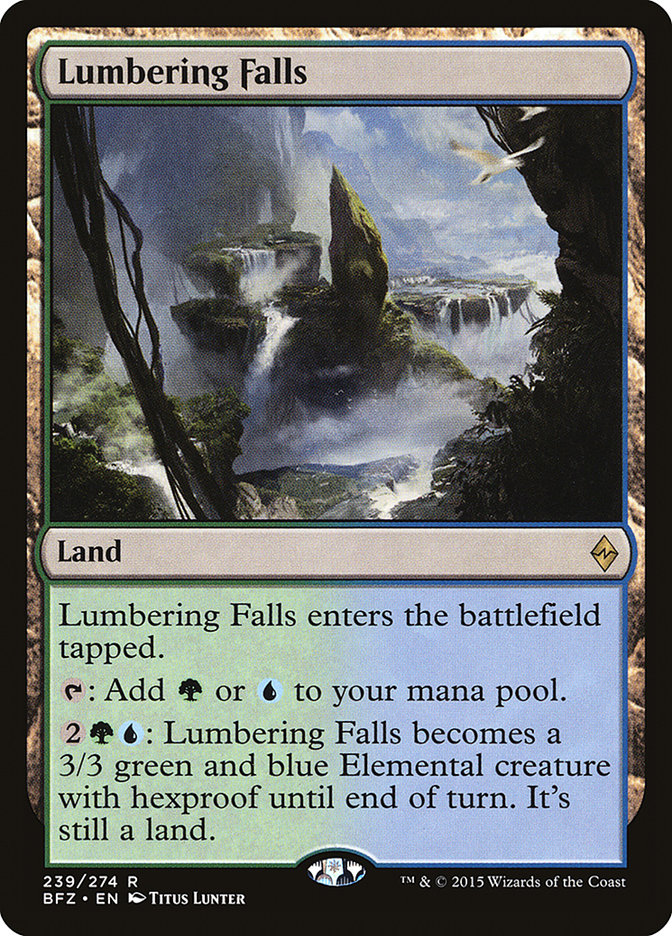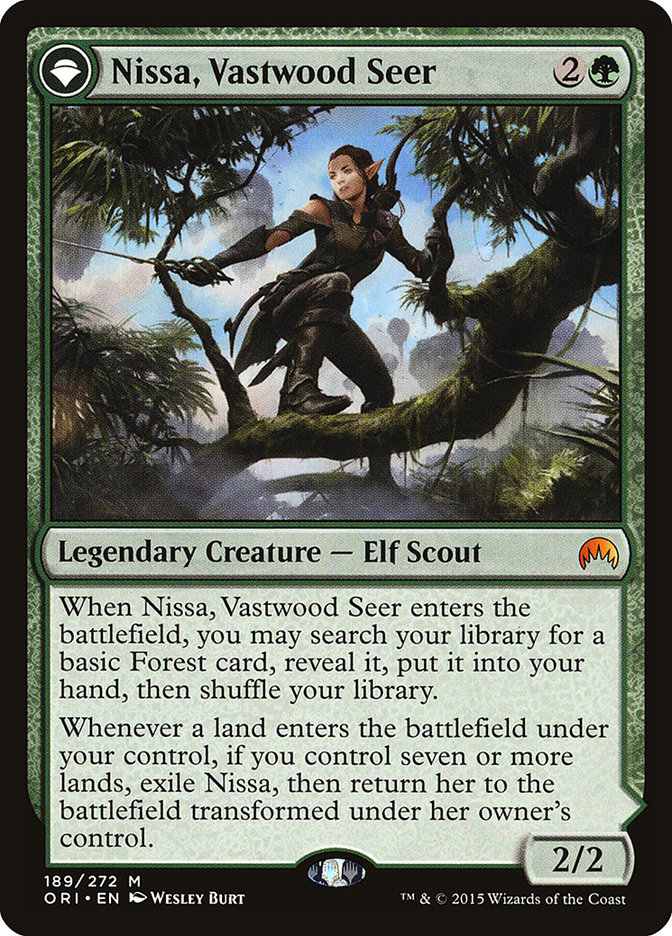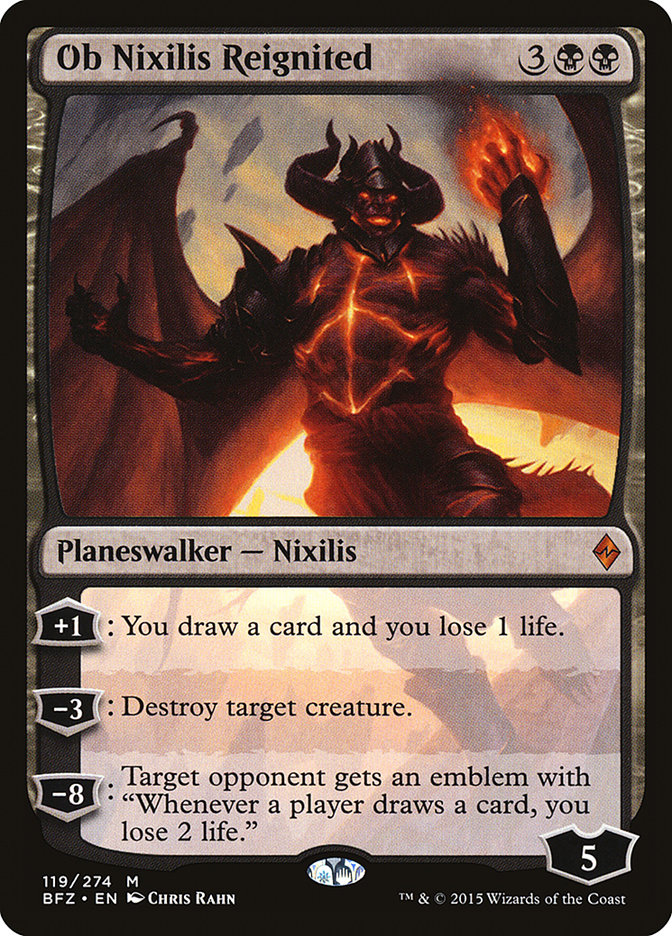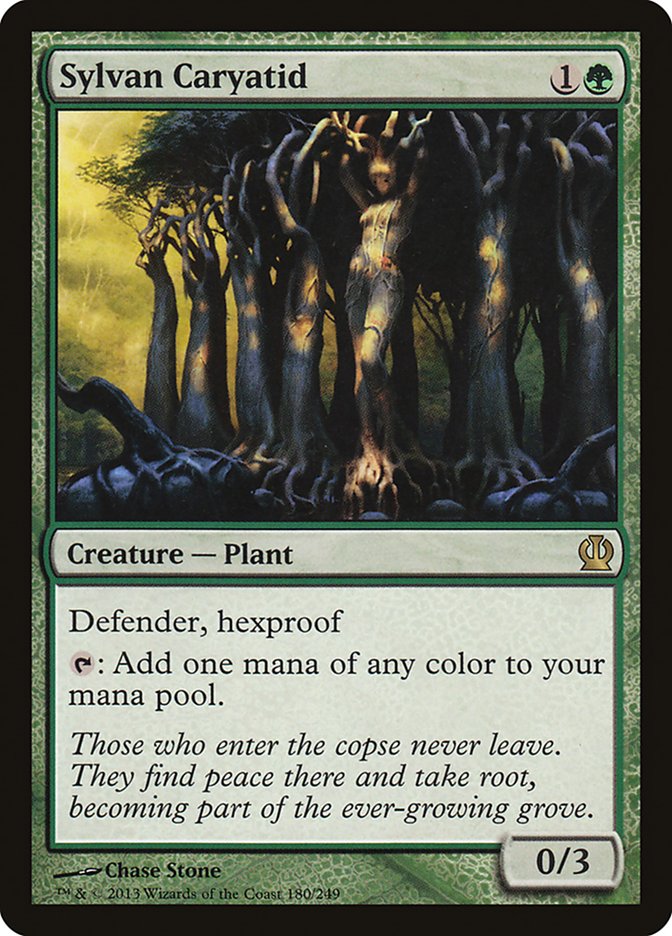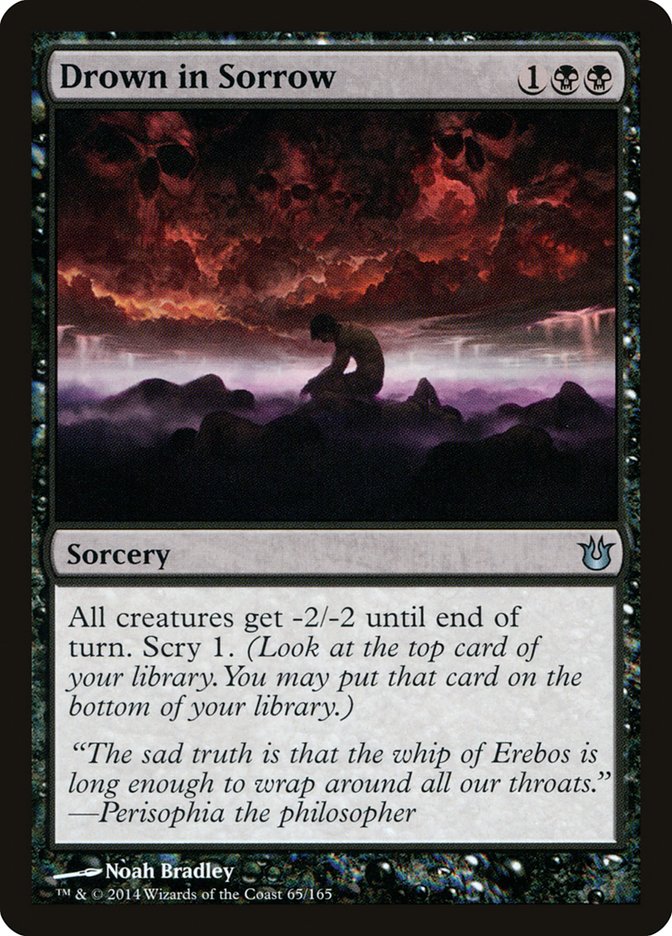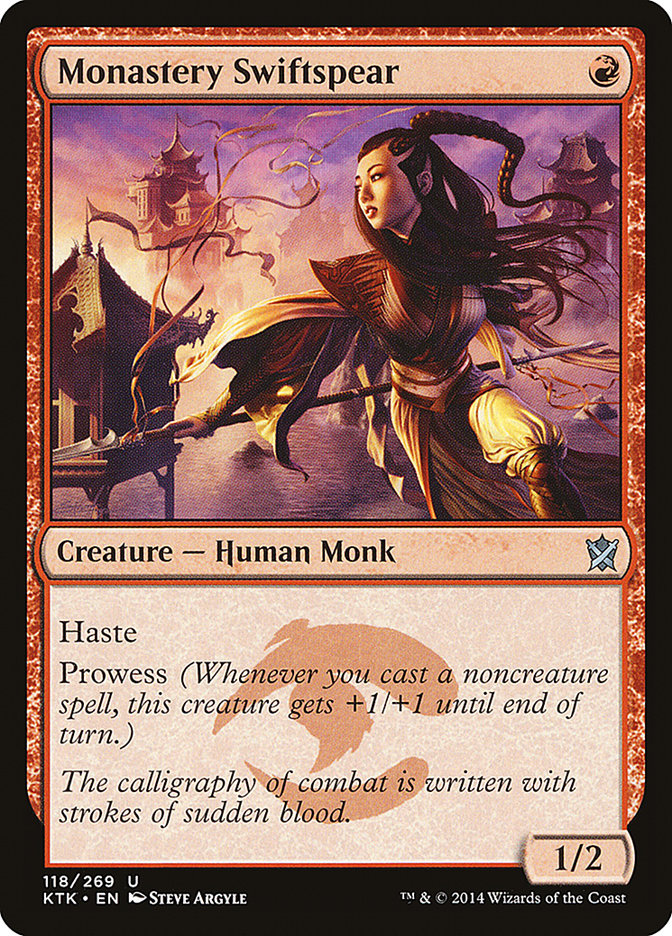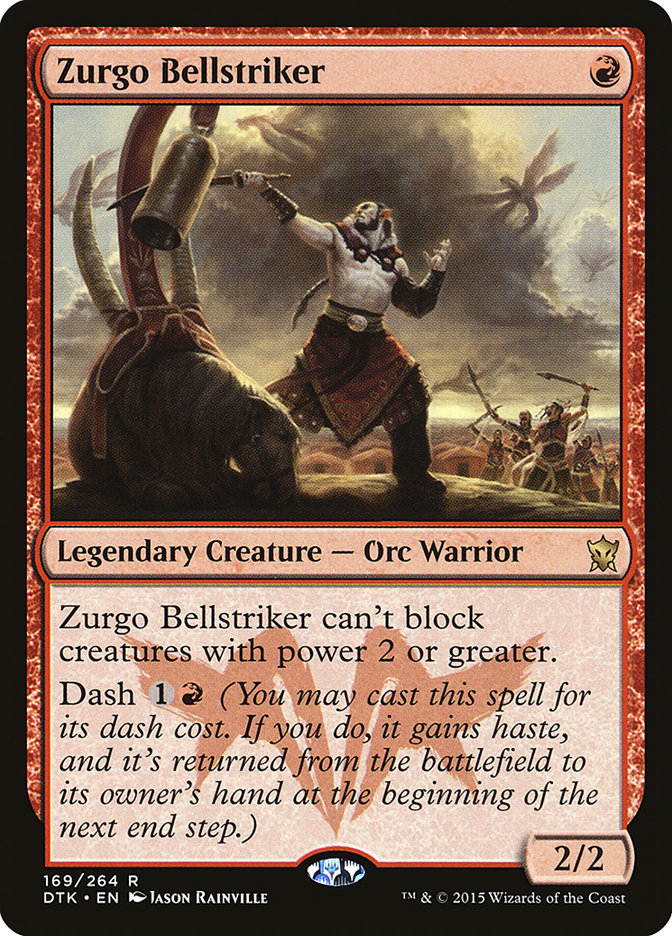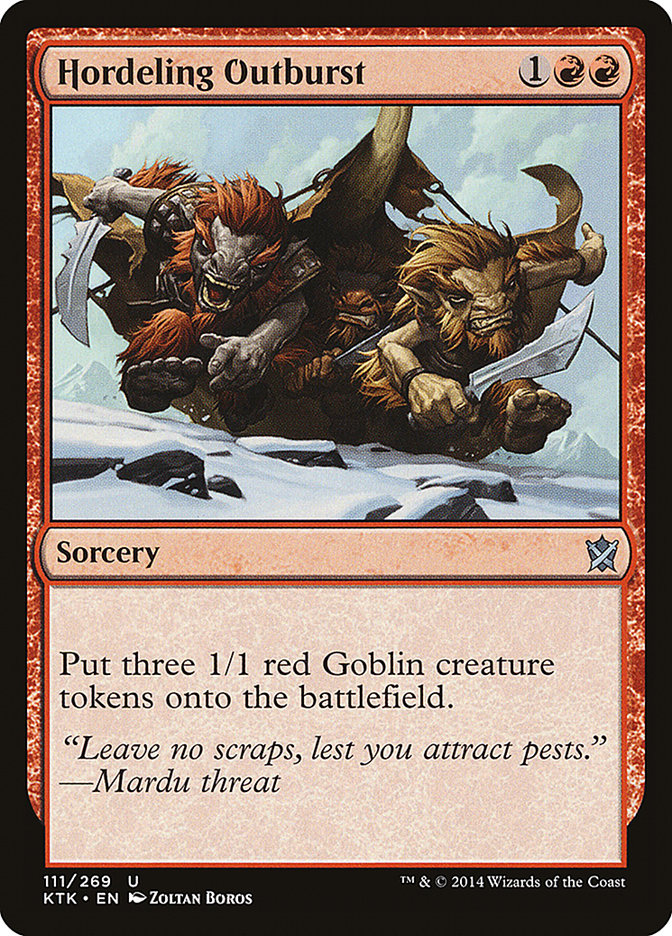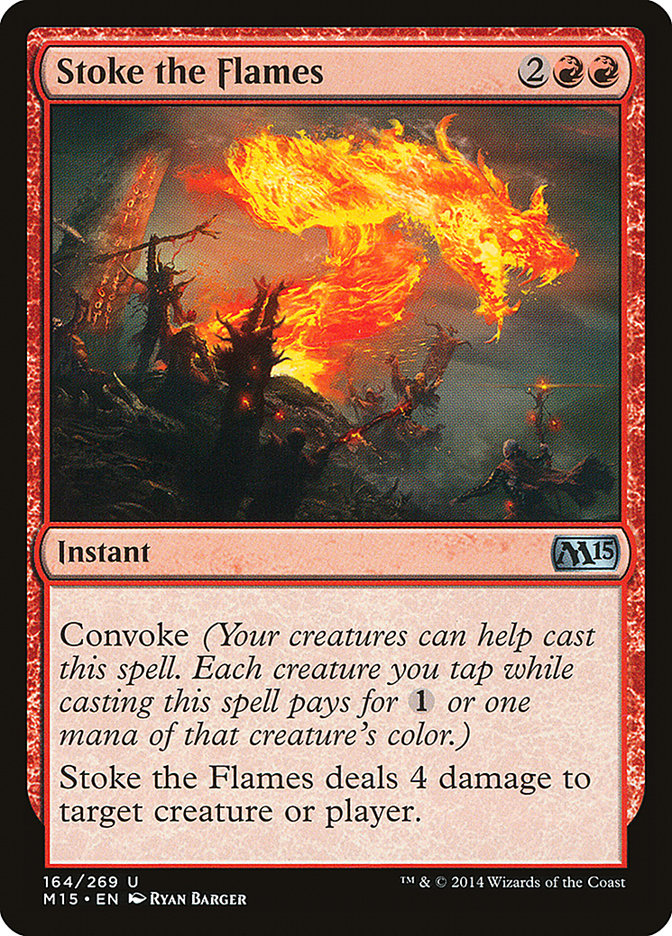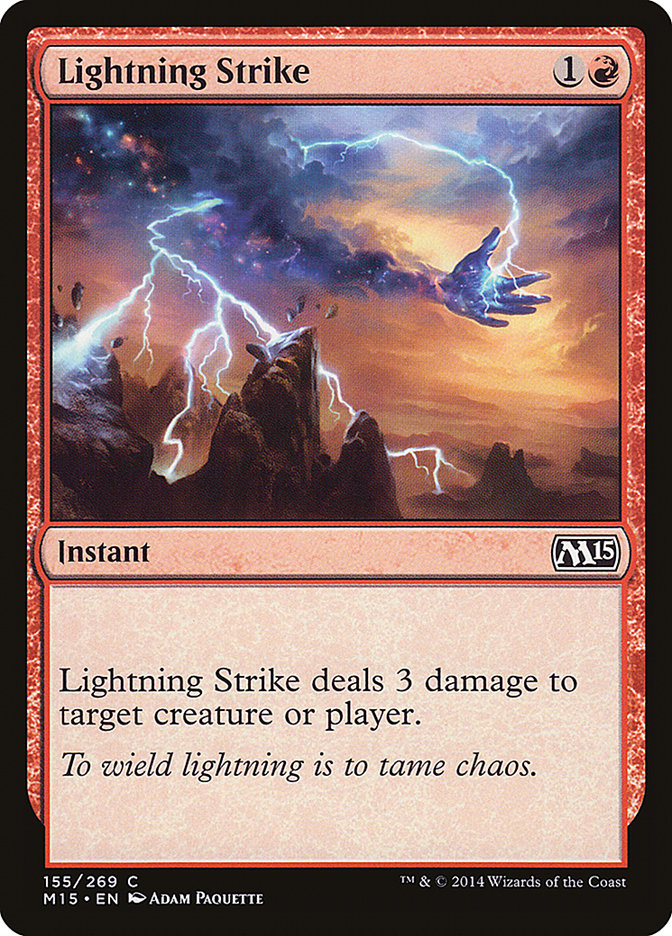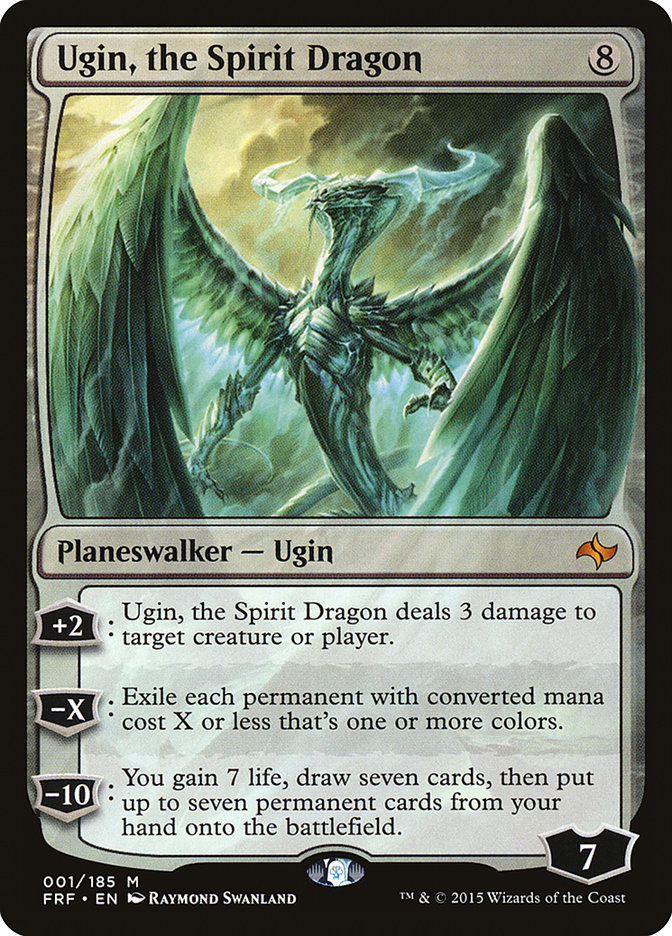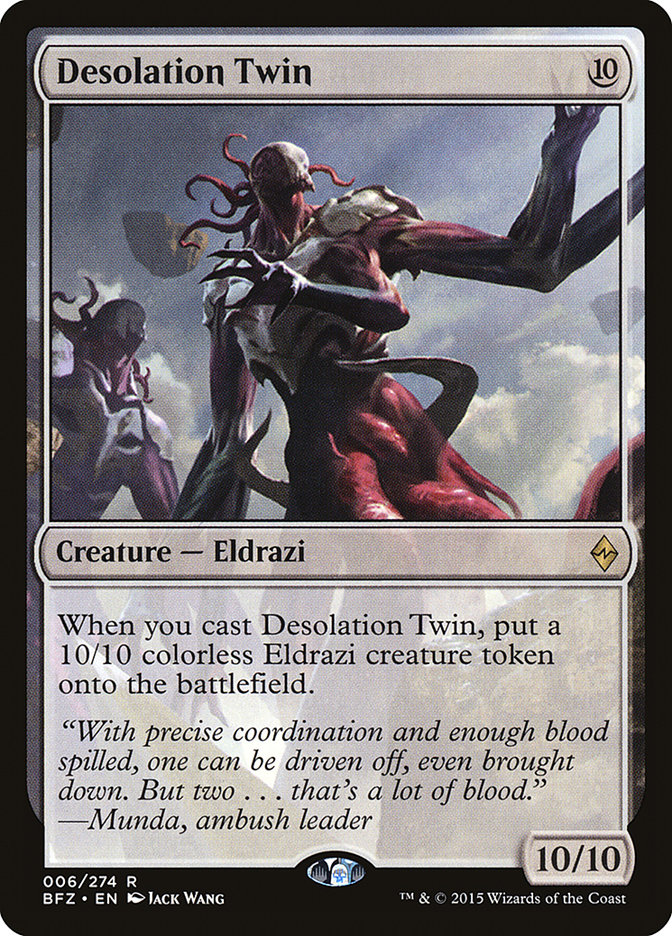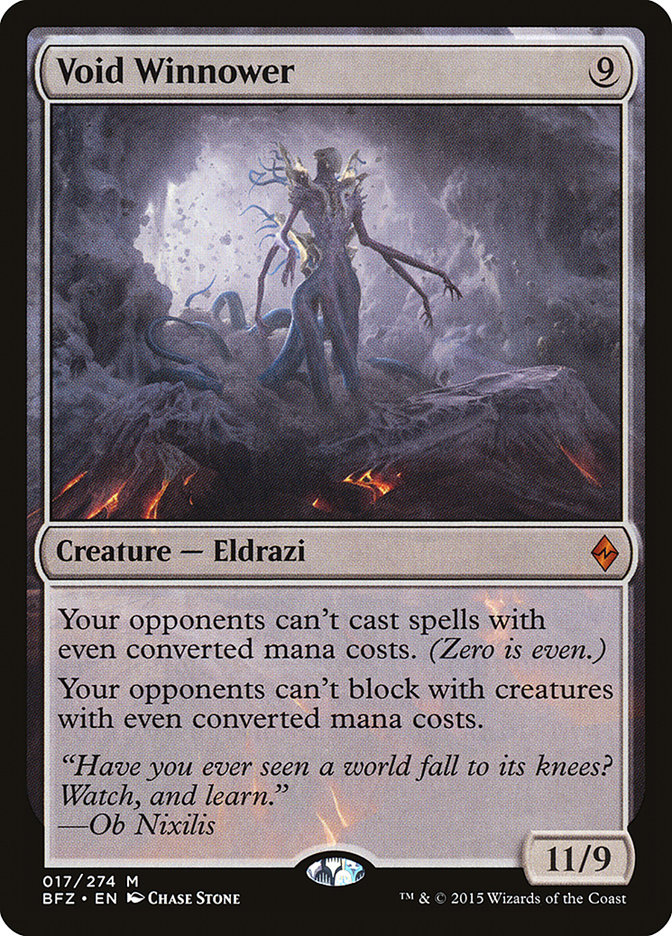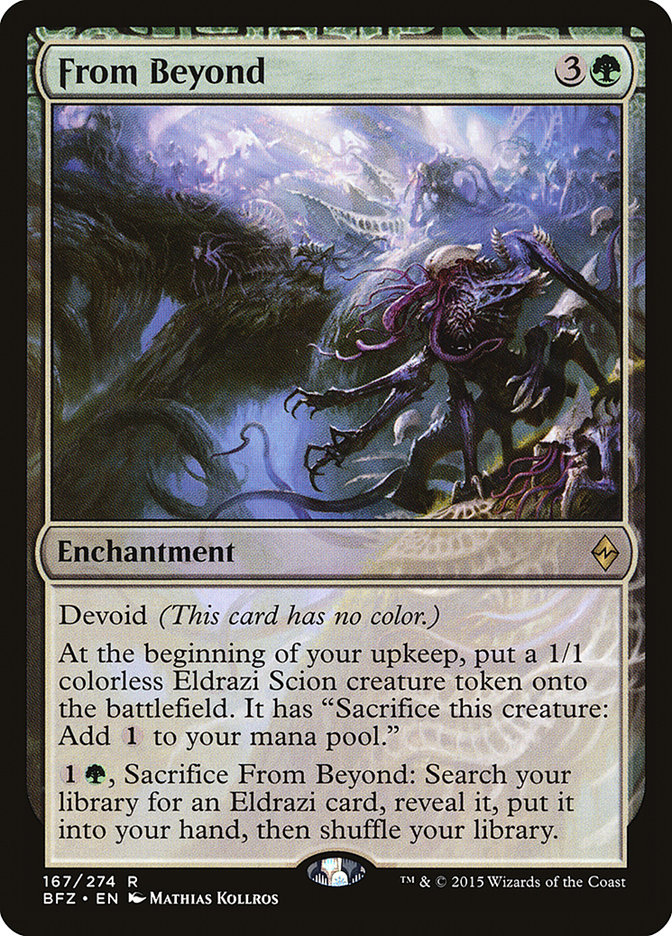I’ve been spending a lot of time this week thinking about one specific shift with Battle for Zendikar that I mentioned in my last article.
Both cards lead to the same end result. Decks will play more lands. More midrangy cards will get more play because you are rewarded with a higher effective
spell rate.
But the games? How everything plays out once you decide that you register those 25-27 land decks and shuffle up? Those are different.
The Temple to creature-land shift isn’t the only place this is seen. If anything, the other case of it is even higher impact.
Or if you want to take some liberties and use cards that are still legal.
The difference should be clear.
The old cards were just…. powerful. They did their thing as good and as hard as possible.
The new cards are mana sinks. Their immediate effect is straightforward, but their scale in power changes as the game continues. Their baseline power is a
little less powerful than the baseline power of the old cards, but it isn’t so far off.
How do these changes trickle down to game play?
Last Year:
Let’s see where we are coming from so we can contrast the future with the past.
This past year has largely been defined by early game smoothing.
It’s almost weird to think about how much the scry mulligan changes early game sequences when we already have been playing with a similar effect for two
years. The Temples meant that if your deck was in the market for hitting its first three land drops, it was super easy for it to do so. That third land
drop in turn lead to a Courser of Kruphix or Abzan Charm that lead to your fourth land if it was missing, and so on. You could keep certain land-heavy
hands and be more likely to cast a reasonable number of spells before dying. Or just simply topdeck a land in the midgame and have it be…. well, still
not great, but not a straight up blank.
As mentioned above, the cards people played were basically exactly what they said they were. Siege Rhino is always just an awesome 4/5. Dragonlord Atarka
is always a seven-drop. Elvish Mystic is just Elvish Mystic. Morph was a mechanic that should give you spell modularity, but the playable cards with it
were either Den Protectors, where the base two-drop mode was terrible, or Deathmist Raptor, where the option on morphing or not was just you playing head
games.
Value and edges were gained out of modularity. Are you supposed to use Abzan Charm to exile that Siege Rhino? Or are you supposed to use Hero’s Downfall to
kill it when two cards and killing Elspeth, Sun’s Champion are both big deals later down the line? It mattered when you played your spells and how you
played your spells to best line up with your opponent’s answers. Run your more removal resilient threats out when they have mana up that would answer
something larger, then play your larger threats when they can’t kill them on the spot to make their next turn as awkward as possible.
A few mana sinks did exist, but the ones that were played were mostly just there because their baseline was great. Fleecemane Lion was the closest to a
truly scaling card and did the job reasonably well, but the rest of the monstrous squad was just giant creatures that “mana sunk” to kill a turn faster.
This Year:
Times have changed.
It’s turn 4. You play a Siege Rhino. Your opponent has Elspeth, Sun’s Champion and can’t answer it on curve, takes a ton, and dies. Or they have Hero’s
Downfall and the game continues minus a three-point drain.
It’s turn 10. You play a Siege Rhino. Your opponent has Elspeth, Sun’s Champion, -3’s it, and you are blown out by them using a single card to answer your
threat and advance their board. Or they have Hero’s Downfall and the game continues minus a three-point drain.
It’s turn 4 You play Siege Rhino. Your opponent has Ruinous Path. The game continues minus a three-point drain.
It’s turn 10. You play a Siege Rhino. Your opponent has Ruinous Path. You are blown out by them using a single card to answer your threat and advance their
board.
See the difference?
Or just this perfect comparison:
We have two green three-drop creatures that smooth mana, but one is always just as is while the other is suddenly one of the best threats in the format
once you hit the end game.
Cards that scale mean that the dance has changed. You are still trying to force answers and line yours up right, but instead of it being “Strand them with
Valorous Stance then beat down with Den Protector,” it is “force them to Ruinous Path before it also gives them a 4/4.”
It also means that games are going to get cracked open a little more. Once the game hits a certain point, so much more of each players’ deck is heavy
hitters.
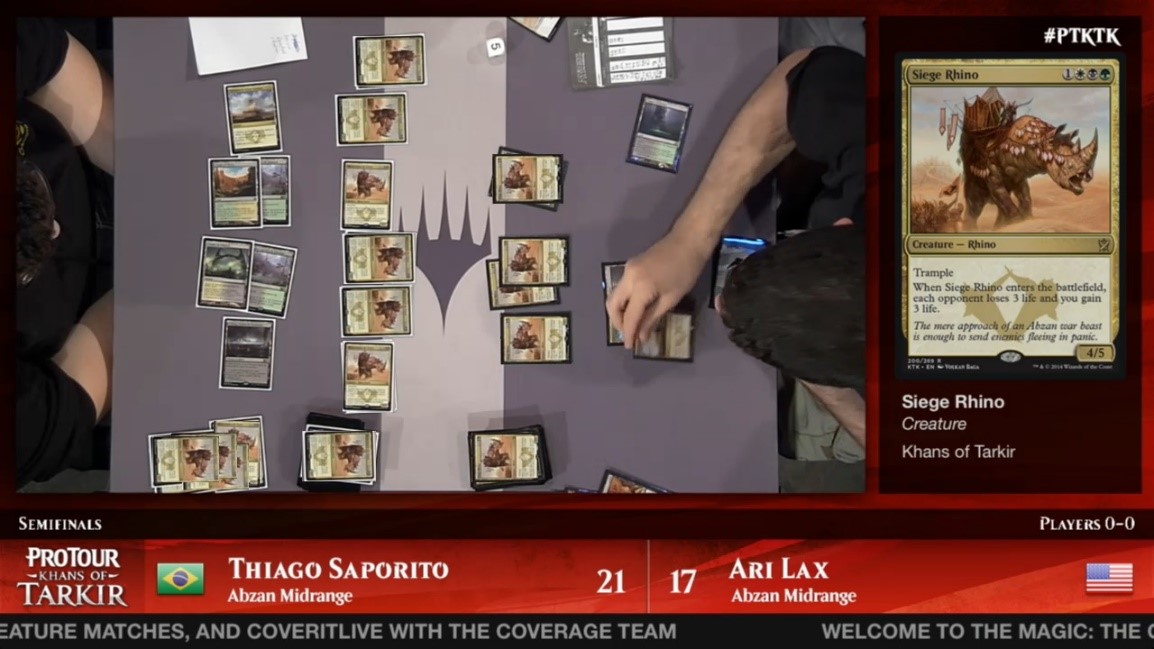
Things won’t degenerate into this because a greater percentage of each deck is a trump. People will draw to their breakers quicker, the odds of getting two
big hits ahead will increase, and there will be less recovery time if you do have an answer, as the next big spell is just around the corner.
There’s also more of an incentive to push the game towards empty boards. While getting a free 4/4 land with your spell or a free 2/3 with your land is
nice, those are still trumped by the actual threats of the format. If both players have nothing on board though and one starts attacking with a land, that
player is solidly ahead.
Worth noting: Lands that are creatures can also die like creatures do. There is a limit to how many you can throw away and still be in Awaken or “activate
a creature-land” range. I’m not sure how many Awaken spells that limit is at, but be aware that there exists a point where you will be oversaturated on
them and the non-Awaken slightly better default versions of each card will be better in the last slots.
The Exceptions
There are obviously some cards in the new set that are from the old Theros–Khans of Tarkir model of just being good cards at a set cost.
It would be near impossible to make a Magic set without them.
The obvious examples are the planeswalkers. All three of them are good, and I’m betting that’s an understatement for two of the three.
Pat Chapinalready wrote a ton about Gideon, Ally of Zendikar last
week, so I’ll stick to my usual pithy observations about nothing. Why does this card become an Ally except for flavor reasons? Am I really supposed to be
playing Kabira Evangel the next turn in Modern? (Real answer: No, Gideon probably isn’t what that Modern deck wants as Collected Company is a way better
four-drop.) None of the new Allies seem to have the counting or Allies only boosts of the old Allies. It’s just kinda weird to look at the card, think
“Oooh, this becomes an Ally,” then realize that means absolutely nothing right now.
The other two are a little less talked about, so I’ll go a little more in depth.
Ob Nixilis is great. Pat went over the card, but I’m not sure he did it
true justice. Just looking at the numbers, this card seems like it will play out like a bulkier Liliana of the Veil. Playing it into an empty board just
grinds you too far ahead on value, but the part that reminds me of Liliana is how it plays against any light board on your opponent’s part. The classic
Liliana disaster is when your one creature gets Edicted, you either brick on another creature or it is killed on sight, and suddenly you are committed to
getting double Edicted by Liliana or just dying to the eventual discard grind. Having this happen when facing down Ob Nixilis Reignited is even worse, as
the +1 is actual card advantage is more punishing. That sequence isn’t a two-for-one, it’s a full on three-for-one. Prepare for full on misery when this
happens to you. The only drawback might be that this card can get locked out of providing constant advantage when behind or low on life, but that’s why
they made Shambling Vent, Sorin, Solemn Visitor, and Siege Rhino.
Kiora is a bit more of an odd duck than the other two. The abilities are powerful but don’t look like typical midrange planeswalker abilities. She looks
like she is best friends with Dragonlord Atarka and bulky beaters to vigilance up like Savage Knuckleblade, but this is a card that deserves more a unique
exploration than I can give it here.
The last raw power card I wanted to talk about today is Greenwarden of Murasa. No, I did not just start playing Commander. This card is just good. It’s not
something I can quite yet lay out all the interactions on to explain clearly, but just looking at the card, it’s good. It’s clearly a 5/4 because at 5/5 it
would live through a rebought Languish and crush people’s souls. It might seem like Den Protector is a hard act to follow with a similar effect, but that
card lost a bit of ground. There aren’t Soldier tokens you have to attack planeswalkers through, there aren’t Boon Satyrs or Ajani, Mentor of Heroes to go
big with, and adding counters with Dromoka’s Command is rarer as that card also gets worse. It may be time for the bigger body in decks that don’t have
Deathmist Raptors to loop, or really just the potential three-for-one.
Over and Under
All of this stuff I’m talking about is midrange mirror nonsense. How can you exploit these changes in how everything works?
If you are fighting tri-lands versus tri-lands, things like the card advantage and positioning I’m talking about are really important. But if it’s basic
Mountain versus tri-land? Not so much. You aren’t going to get to the seven mana necessary to Awaken a Ruinous Path, and the baseline three-mana sorcery
speed kill spell is pretty bad.
People will cite Courser of Kruphix and Sylvan Caryatid leaving as the big boon to aggro, and they are right. They might even note Drown in Sorrow and
Anger of the Gods left the format, to which they will be reminded that Seismic Rupture and Languish are still cards. The part they won’t talk about is that
the Temples also played a role. Again, those cards made it so that you were much more likely to hit your key three- and four-drops to stabilize the board.
Stumbling is typically the percentage aggro is trying to exploit, and the most common stumbling in this format was playing behind the curve for a turn or
two because the tapped lands were so good. Creature-lands, on the other hand, don’t do anything early besides fix your colors. At least Shambling Vent
looks good on paper against small attackers.
Most of the Atarka Red shell is still around and the mana is now significantly better as your Temple of Abandons are replaced by Cinder Glades that enter
the battlefield untapped on turn 3 to cast your Hordeling Outburst on time. The creature base stays mostly the same, with the big downgrade being Foundry
Street Denizen turning into something like Goblin Glory Chaser. It’s not like people weren’t already debating Goblin Heelcutters over Goblin Rabblemasters.
The slots you have to shore up are the spells. Exquisite Firecraft is a big drop in quality from Stoke the Flames as zero mana to cast is significantly
less than three. A lot of this half of the deck hinges on how good the other smallish burn spells in Battle for Zendikar are. Lightning Strike
wasn’t exciting, but it was still relatively efficient.
But really, the red cards were always able to battle around Courser and Caryatid. That was why they won two Pro Tours during the period those cards were
legal. The real question is more about what other decks or cards can shine now that you can actually attack profitably as deep into the game as turn 3. As
per Ross Merriam’s article last week, the big winner is
likely Kytheon, Hero of Akros, and to a lesser extent, the other one-mana 2/1s in black and white, like Bloodsoaked Champion. Again, if your goal is to
triple one-drop, you are no longer super dead if you lose the die roll because the odds of there being a 2/4 lifegaining Centaur Enchantment in the way
went down from a coin flip to 0%. That isn’t to say something like Catacomb Sifter won’t suck to play against, but that card is much narrower in
application and much less powerful, therefore, it will have much smaller metagame share than 1GG, draw an extra half a card, gain life, and have a relevant
body.
What about the other half of this? Going over midrange.
I’m going to ignore the possibility of getting there with answers and Dig Through Time, at least with the cards revealed so far. Not only is this more of a
“Wait for the metagame to settle out a bit” kind of thing, but Deathmist Raptor and Den Protector are still Magic cards that will grind out a control deck.
I talked a bit about the ramp possibilities last week with regards to Ulamog, the Ceaseless Hunger, but it’s worth updating our assumptions based on new
cards.
So the big Eldrazi I was talking about were waiting a bit to show up, but these are still fairly unexciting. Neither solves the problem of finding your
second Eldrazi in case the first dies. Void Winnower is pretty cool but really suffers from dying to removal without leaving any value behind, or at least
it does when the kill spells I care about so far are three mana (Abzan Charm, Ruinous Path) or five mana (Crux of Fate, Planar Outbust). Desolation Twin is
a little better as it does bring the second Eldrazi along with the first, but the lack of diversity in scale compared to Ulamog is a problem. It’s
competing for the same limited slots (are you really playing eight ten-drops?) and is for the most part just worse than the Eldrazi Titan option. Ugin, the
Spirit Dragon and Dragonlord Atarka are still probably the best things around.
Oh, I guess I did miss one card that might close the gap here.
Honestly, this is the best big Eldrazi printed so far and it isn’t even a ten-drop. Turns out scalable effects are also really important for the deck that
is making the most mana (see also how I was all about Hedron Archive last week). If you need mana, this card makes it. If you need Ulamog, this card is
Ulamog. If you need blockers… this works in a pinch. Maybe lean harder on other cards because 1/1 Eldrazi Scion suck at blocking Siege Rhino, a Mantis
Rider, or a Den Protector.
Watch this card. If it turns out Ulamog, the Ceaseless Hunger is good enough to build a deck around, From Beyond is going to play a huge part.
Of course, if it turns out Ulamog is that good, a lot of the midrange stuff I mentioned above is likely a little less relevant, but the point stands. The
way decks and cards scale up with larger than normal amounts of mana is going to be fundamental to the early parts of this format just like the lack of
good two-drops that stood up to Sylvan Caryatid and Courser of Kruphix was key to the early part of the format last year.
And if a ten-drop isn’t good enough, still expect to be living in a world where people are happy to have ten lands in play.

